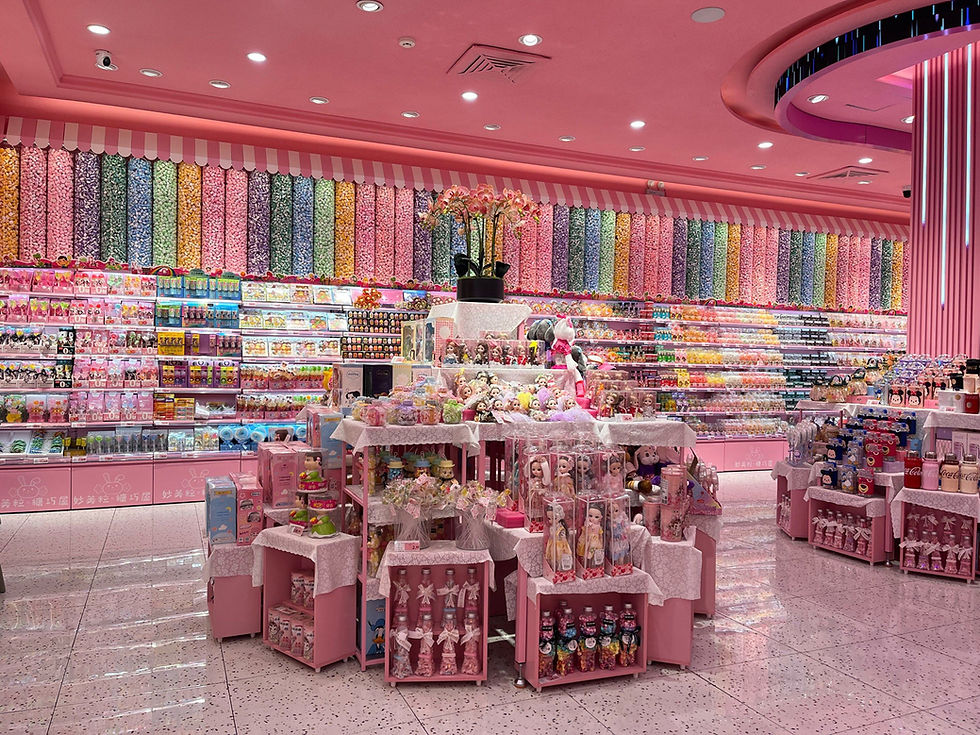How to Chose Air Conditioners for Shops for Energy-Saving?
- Kai Zhang
- Sep 13
- 2 min read
As a core element of commercial space design, the choice of an air conditioning system directly impacts both operating costs and customer experience. From over ten years of project experience, I’ve seen countless cases where poor air conditioner selection led to excessive electricity bills and uneven cooling. This guide highlights four key factors to help shop owners make the right choice.

1. Capacity Matching: Accurate Cooling Load Calculation
Basic Formula: ≥ 200W cooling capacity per square meter.
Reference: 30㎡ shop → 3 HP unit (≥7100W cooling); 40–60㎡ requires higher capacity.
Case Example: A 100㎡ shop with a 3.7m ceiling height was advised to install two 5 HP units. Actual testing showed that one 5 HP unit was sufficient, saving 8,400 RMB in equipment cost.
Key Principle: Choose slightly larger, never smaller. Undersized units cool slowly and consume excessive power.

2. Model Selection: Ducted AC vs. Floor-Standing Units
Advantages: Hidden installation, space-saving, even airflow.
Case: A restaurant used corridor ceiling space to install ducted AC units at only 28cm in height. Combined with curved ceiling design, this preserved ceiling height and improved aesthetics.
Note: Requires simultaneous water and electrical work; maintenance costs can be higher.
Floor-Standing AC
Advantages: Plug-and-play, ideal for shops without suspended ceilings, quick cooling.
Case: An exhibition space installed three 3 HP floor-standing units, positioned behind decorative partitions to keep the look clean.
Suggestion: Prioritize single-unit systems (one-to-one design), which cost only one-third of central AC systems and have lower failure rates.

3. Energy Efficiency & Power-Saving Features: Cut Bills by 50%
Look for the new national first-class energy efficiency label.
Choose reputable compressor brands (e.g., Highly, Gree); heavier outdoor units usually indicate sturdier construction.
Use smart features: 26℃ “golden temperature,” self-cleaning, and sleep mode to reduce standby consumption.
4. Installation Details: Avoid Hidden Costs
Extra charges often arise from extended copper piping, high-altitude installation, and drainage modifications.
Outdoor unit height ≥ 1.9m and distance from indoor unit ≤ 8m.
Plan pipe routes in advance to avoid excess material from detours.
Sign a detailed installation contract with clear fee standards; select brands with strong after-sales service.

Case Reminder: A clothing store had poor outdoor unit placement, requiring 40m of extra copper piping, driving installation costs up by 300%.
Conclusion
Choosing the right shop air conditioner requires balancing functionality, aesthetics, and cost-effectiveness. Focus on three key indicators: cooling capacity, energy efficiency rating, and installation plan.
After selecting the proper model, coordinate early with the renovation team on electrical and ceiling layout to achieve the perfect blend of design and practicality.





















Comments